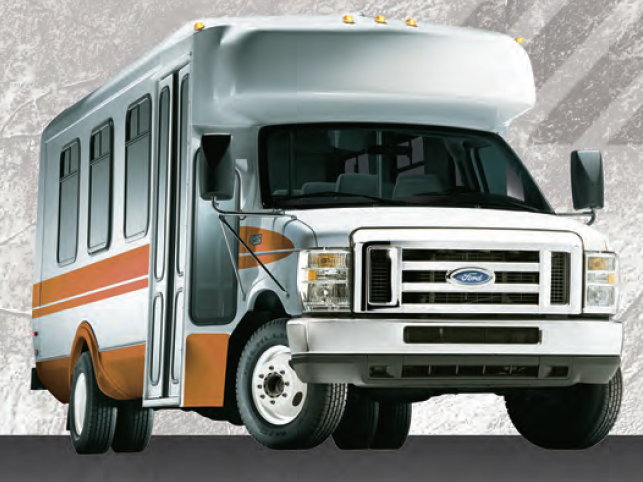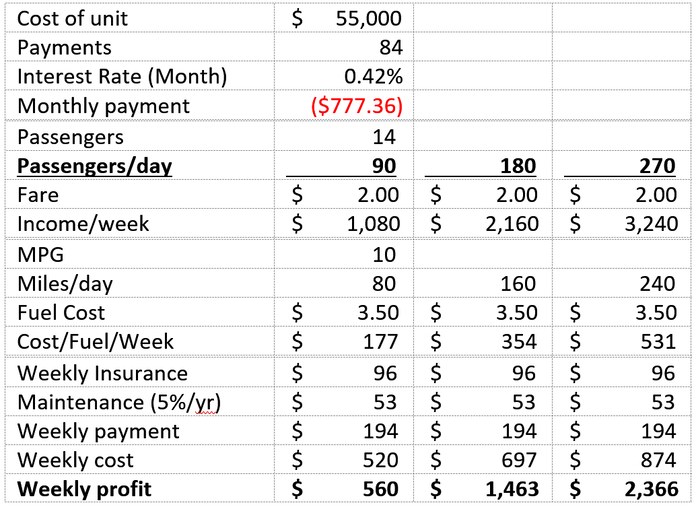A Radical Low-Tech Proposal to Solve Miami’s Transit Problems Ask just about anyone in Miami-Dade what is our worst problem and the most likely answer you’ll get is “traffic”. Miami ranks at the bottom of any driving-related lists. Rush hours now extend three or four hours and it is considered normal to take 30 – 45 minutes to go 5 or 6 miles. In addition to the sheer number of cars, there are two other factors making our traffic even more traffic: there is no room to expand our roads and public transportation is a pathetic joke. Metrorail (or Metro-Fail as it is often called) is just a straight line from the west (Kendall) to the east (Downtown). But Miami-Dade itself is totally spread out. Combined Metrorail and Metromover ridership is around 2.3 million per month (of which 2.0 million are during weekdays). Assuming most people will ride back and forth and that 75% of them are the same people every day, this could be as little as 600,000 individual persons per month. Bus ridership is around 4.6 million per month. This is minute fraction of the around 9 – 10 million trips made per day in Miami Dade. (NTHS Data 2009 projected to 2017 population). So the data is grim: public transportation serves a small fraction of our transportation needs. To add insult to injury, the political establishment has not been able to come up with any solutions. Cliché solutions like trains are expensive (into the $2bn+) and take years to build. From a potential user perspective, there are five key priorities:
Proposal –three key factors: • Minibus fleet • Private/Public partnership • Technology used for route optimization The proposal: 1. Minibus Fleet. Have Miami-Dade County create a fleet of 14-passenger mini-buses, leasing them to individual owner-operators and sharing the revenues. The buses. Minibuses come in several configurations. These particular buses typically carry 14 passengers, weigh about 11,000 lbs and have a wheelbase of 158”, so that the total length equals that of one and a half cars. At around 8-10 mpg they consume pretty much what a Mercedes G63 Wagon does. But, at $55,000 - $60,000 these buses cost half as much as a Mercedes G Wagon. A fleet of minibuses also makes sense two other ways:
2. The Economics of a Public/Private Partnership Roughly speaking, our 2.2 million people take around 3.8 car trips per day for the 9-10 million calculations. (NTHS Data). No amount of buses, metro-rails and metromovers can even begin to impact that figure. However, a fleet of 7,000 minibuses would begin to duplicate the ridership capacity of Metrorail + Metromover. Moreover, if most of the car trips are relatively short and single-person, it is conceivable that 7,000 minibuses could remove 70,000 cars off our roads per day. A fleet of 7,000 minibuses would cost $385 million or, roughly, 20% of the cost of the equivalent Metrorail capacity. What would the economics of a public/private partnership look like? I propose that Miami-Dade buy the buses (through issuing bonds or securing the debt of the private citizen buying the bus) and then “sell” them to individual owners. In order to avoid an undue concentration of power and replicate the failed cab industry, one can visualize an arbitrary limit on individual ownership (10? 5?) and, in order to qualify owners the government could mandate that all owners/drivers pay for the driving lessons out of their own pockets. Is this affordable and attractive? My calculations show that yes, after about 180 passengers per day, minibus ownership is an attractive self-employment option: So it is realistic that an owner/driver make $1,500 per week, which is high compared to the Miami-Dade average yearly income of $58,000.
Miami-Dade would make money by selling advertising on the buses. 7,000 buses selling billboards on the side for as little as $350/month (for both) would generate $2.5 million per month, which would help pay for the bureaucracy and have money left over to pay drivers a performance bonus. Subcontracting the commercialization to a company such as ClearChannel could be done for 25% - 30% commission, which would still leave plenty of money per month. 3. Technology used for traffic optimization Finally, an app similar to Uber’s would measure demand and supply, making sure buses are driven to where they are needed most. This app could also measure the performance of each bus, making sure that buses receive proper maintenance, keeping track of MPG figures, driver license renewals, etc. Bottom line: A public/private partnership which would create thousands of jobs can be achieved by the country “buying” a large fleet of minibuses and “selling” them to individual owners. This fleet would be highly efficient in reacting to traffic needs and improve our traffic conditions measurably.
0 Comments
Your comment will be posted after it is approved.
Leave a Reply. |
Details
Marcelo Salup✅ 40 years of expertise in all aspects of advertising: consumer insights, creative and media ✅ Extensive national and international experience Archives
September 2021
Categories
|
Services
✅ Project or Fractional CMO
✅ Product Launch ✅ Ad Agency services ✅ Training & Workshops ✅ Retail |
Company
Contact us: Iffective LLC
3191 Grand Avenue #330183 Coconut Grove, FL 33133 +1-305-215-7229 MSalup@IffectiveMarketing.com |
© COPYRIGHT 2022. ALL RIGHTS RESERVED.
All forms, documents and tools are the intellectual property of MS Group LLC & Iffective LLC Read our Privacy Policy here |



 RSS Feed
RSS Feed